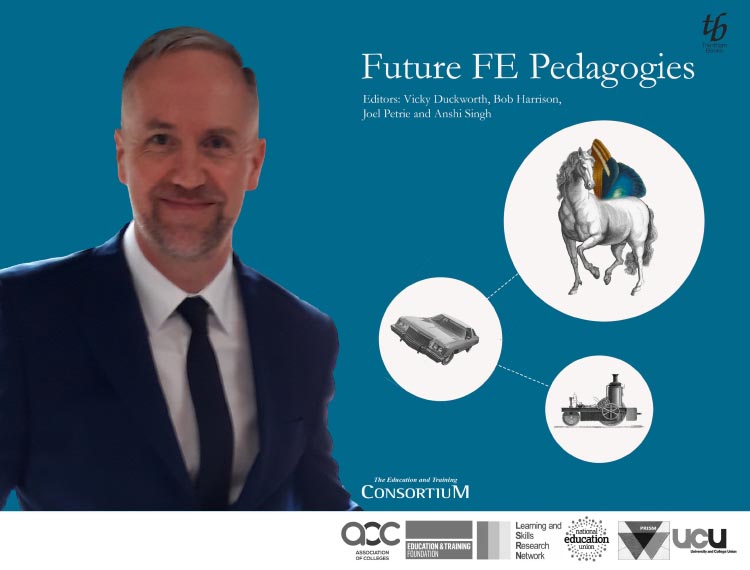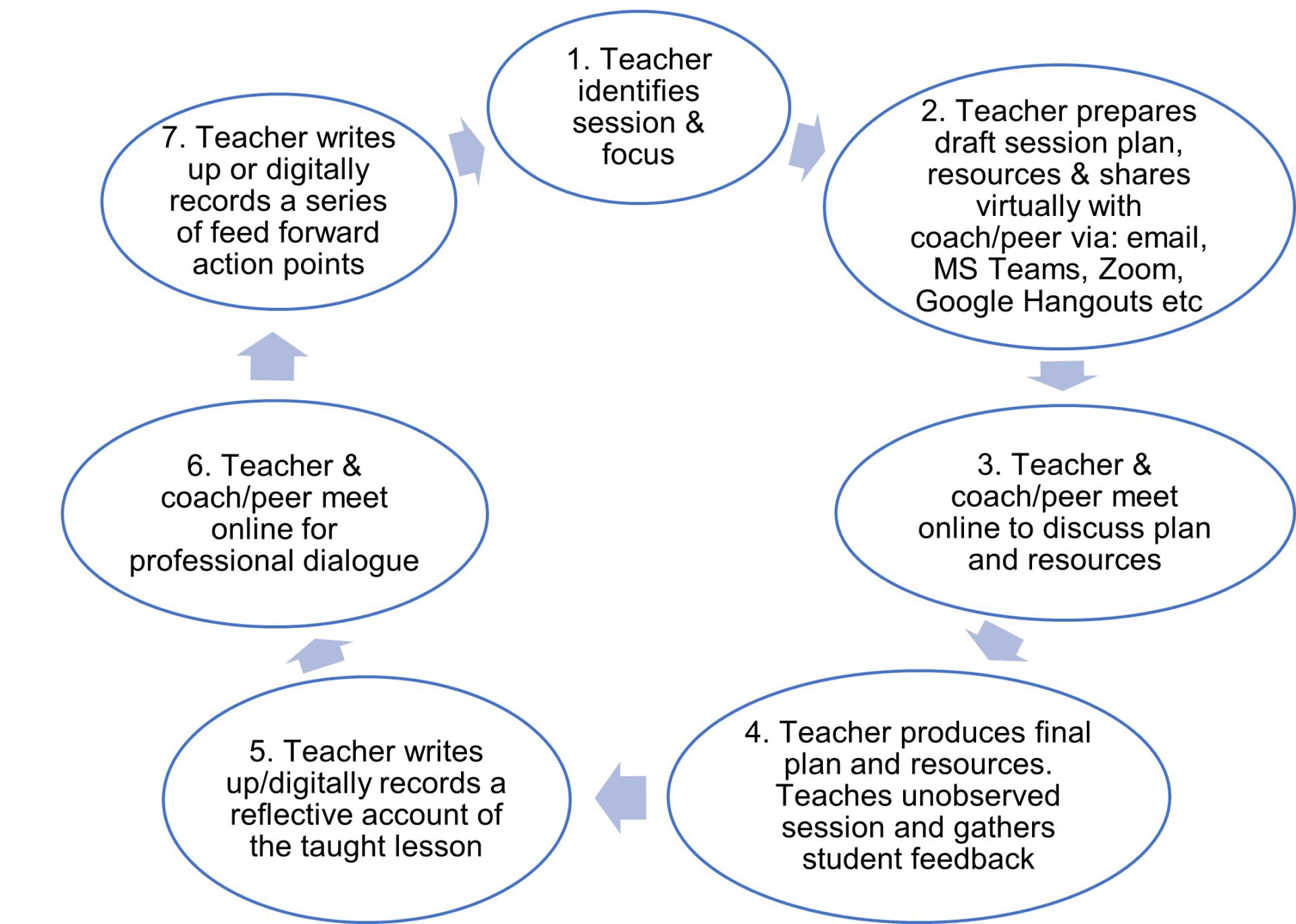Rethinking the improvement of teaching and learning in a virtual environment through unseen observation

With institutions having to make a rapid transition to online delivery, Covid-19 has left an indelible mark on the educational landscape.
Understandably, some are concerned about how the quality of teaching and learning is being assured, along with supporting teachers to adapt and thrive in this new environment.
How can this be done remotely?
‘Unseen observation’ is an innovative method that is increasingly being embraced by a growing number of colleges and schools, with practitioners acknowledging its positive impact on attitudes to observation and reporting significant improvements in their critical reflection on their professional practice, subsequently feeding into improvements in their teaching and their students’ learning.
What is unseen observation?
The term ‘unseen observation’ might seem like a contradiction given that it is a model of observation that does not actually involve observing a taught lesson. It is a teacher-centred model of observation where the fundamental work takes place in the pre and post-session conversations that form the foundation of the unseen observation cycle (see Figure 1 below).
The teacher’s recounting and reflection on the taught lesson is what provides the stimulus for the professional dialogue between them and their coach/peer, as well as a pre-session meeting (Stage 2) between the two in which the proposed session plan is discussed.
Originally designed for face-to-face interactions, one of the many advantages of unseen observation is its flexibility, which makes it perfect for adapting to virtual learning environments. Figure 1 below provides an overview of the 7 stages of the virtual unseen observation cycle.
What are the principles and purposes of unseen observation?
Unseen observation shifts the traditional emphasis of observation from a product-focused event to a process-driven practice that prioritises deep, meaningful thinking about teaching and learning through collegial conversations and collective reflection.
This takes place through detailed conversations about the teacher’s planning, their delivery and analysis of its effectiveness. By removing the ‘performance’ element traditionally associated with classroom observation, unseen observation allows us to reconceptualise how we think about observation as an educational tool to support teacher improvement.
It also puts the control and accountability of the process back into the hands of practitioners, as it is built on the premise that they are the best people to decide their own professional needs and those of their students.

Figure 1 – An overview of the 7 stages of the virtual unseen observation cycle
How does unseen observation work in practice?
Stages 1-4: The teacher identifies a session and particular area of practice they wish to focus on. They prepare their session plan and resources, sharing them virtually with their peer/coach before arranging an online meeting. The pair discuss the rationale for the selected teaching techniques and tasks, along with the anticipated impact on the students.
The Stage 3 conversation also explores the teaching and learning philosophies underpinning the teacher’s reasoning and considers any improvements before the teacher finalises their session plan. The teacher then delivers the unobserved session, including opportunities for students to provide feedback/evaluation of their learning experience (e.g. online questions on a chat forum), which can be used to inform the teacher’s subsequent reflections.
Stage 5-7: The teacher writes up and/or digitally records a reflective account of the session. The teacher and peer/coach meet online for a post-session conversation to discuss the effectiveness of the session and the anticipated outcomes.
The two interrogate any assumptions upon which the plan was based and examine possible sources of evidence. Following the discussion, the teacher then writes up/digitally records a series of feed forward action points to work on.
What are some of the benefits of virtual unseen observation?
- Depth and rigour – the depth involved in the planning, reflection, discussion and analysis of the session means that unseen observation can be a more rigorous process than conventional models of observation. It provides a platform for institutions to formally embed the importance of reflection into its improvement systems, recognising the value of in-depth thinking about teaching and learning.
- Removing the Hawthorne effect – teachers are able to behave more naturally and authentically without the presence of an observer during the session.
- Creativity and risk-taking – as the surveillance and performance elements of traditional observations are no longer present, it encourages teachers to be more creative and take more risks in their teaching without the fear of being judged.
- Recalibration of locus of control – the shift in the locus of control from the ‘observer’ to the ‘observed’ creates a more equitable working relationship, reducing some of the counterproductive effects of traditional observations. Placing the teacher’s thinking and decision making at the centre of the process also allows them to explore and discuss wider aspects of their beliefs about teaching and learning in greater depth instead of focusing on an isolated session.
- Teacher autonomy and ownership – as individual teachers are empowered to decide the focus of their unseen observation, this provides them with increased autonomy to take ownership of their practice, along with the freedom to reflect more meaningfully and deeply on what they do and its impact on their students.
- Flexibility – unseen observation can be adapted to working with staff individually or in small groups, from an individualised area of focus to a collective theme of interest/relevance to multiple members of a team. As it does not require face-to-face meetings between staff, it also lends itself well to being used remotely via online platforms.
Take-away thought
Research on professional learning has repeatedly reinforced how meaningful and sustainable improvements in teaching and learning are built on trust, honest introspection and personal responsibility. These key factors all underpin the ethos and practice of unseen observation.
At a time when education has become ever more dependent on the trust, honesty and responsibility of teachers, unseen observation is an innovation that encourages institutions to embrace this as the new normal in helping to assure the quality and ongoing improvement of teaching and learning.
Matt O’Leary, Professor of Education at Birmingham City University (BCU)
Future FE Pedagogies – Vol 1 |
||
|
The Future FE Pedagogies journal was categorically not intended to be a ‘how to improve your e-learning skills’ guide – there are professional associations, websites and online materials fulfilling this function already. Rather, we aimed to provide for time poor colleagues a series of think pieces: nuanced analyses of the potentialities and challenges of TEL for our practice. |
||
| @AoCDavidH | ||
| @BobHarrisonEdu | ||
| @DrMattOLeary | ||
|
Free, easy and fit for purpose TEL: lessons learned the hard way by a non IT whizz |
Martin Compton |
|
|
Research from the front: A Developing Digital Project |
Matt Gordon & Jan Calvert |
|
|
Pedagogy at the centre – getting the blend right |
Eddie Playfair |
|
|
Ways of Engaging: some approaches to developing learning skills |
Ian Duckett |
|
|
The Proverbs of TEL |
Howard Scott |
|
|
Digital Practitioners creating “artfully-crafted, student-centred, learning experiences” |
Nigel Ecclesfield & Fred Garnett |
|
|
Moving a class online |
Dave Cheseldine |
|
|
The Reality of FE TEL Post-Covid-19: Thoughts from the bike by an FE Teacher Educator |
Jamie Heywood |
|
|
An open letter to the Secretary of State for Education: preparing FES teachers and trainers to ‘teach well’ in a digital world |
David Powell |
|
|
Conclusion |
Vikki Liogier |
|











Responses